
November 8, 2019 by WindowRama
How To Clean Windows Effectively
Nobody wants to invest in a home improvement project that will end up costing them more time and money down the line.
So when you purchase new windows, you expect high quality products that will retain their beauty for many years to come.
That’s exactly what you should get.
After a successful window installation, homeowners deserve to relax and enjoy the view. In fact, the last thing they should have to think about is repainting or resealing their brand new windows. Fortunately, when working with Windowrama, they won’t have to.
Not only is Windowrama one of the country’s largest window retailers, but we specialize in professional window installation. So when you purchase new windows from one of our local showrooms, our licensed, insured staff will ensure they are installed properly.
Remember: A quality installation is important if you want to avoid unnecessary maintenance down the line. This may require additional time and expertise, but it helps assure your products will perform for years to come.
Of course, this does not mean you should fully neglect your new windows once the installers are out the door. Some simple, easy maintenance — such as cleaning or dusting — can go a long way.
Washing windows may sound like a tedious task. However, it’s important to do so once or twice a year. Not only will this keep them squeaky clean, but it can help maintain their performance. After all, every homeowner wants to get the most out of their investment.
In order to help you get the job done right, we have included a few tips below.
Keep reading to learn how to clean windows in your home.
1. Cleaning The Glass
One of the most obvious benefits of having beautiful, streak free windows in your home is the view it can provide of the outdoors.
For this reason, the glass panes in any windows are usually their most distinctive feature. It’s through these panes that sunlight is allowed into the home and homeowners connect to the natural world around them. So if the glass is noticeably dirty, it’s definitely time to get to work.
When it comes to cleaning these areas on your windows, there are some important “do’s and don’ts” that will help you get the job done efficiently. Keep reading to learn how to clean window glass:
Avoid Sunlight
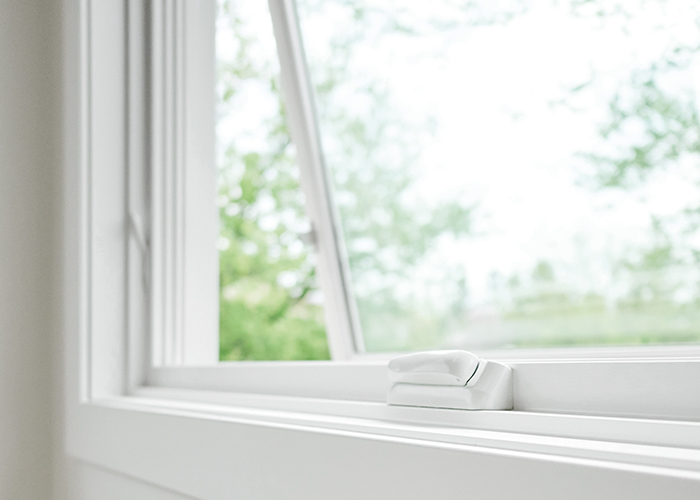
Cleaning windows while they’re facing the sun is an invitation for streaks.
To avoid streaking, try to save this chore for a cloudy day or when the sun is on the opposite side of the house.
Use Water
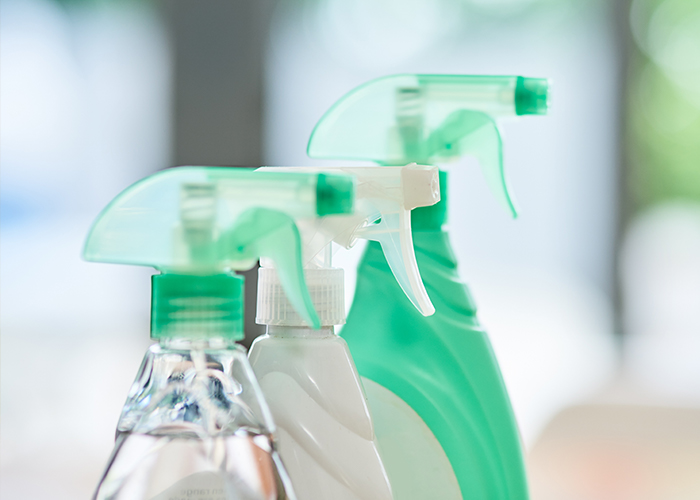
When cleaning windows, water can be your best friend. Gently soak the glass with warm water before getting started to loosen dirt and debris.
Spray bottles are great for this, but any method will do. Just make sure the water is clean (no dish soap or white vinegar!) and avoid using gallons of water.
Use Window Cleaning Solution
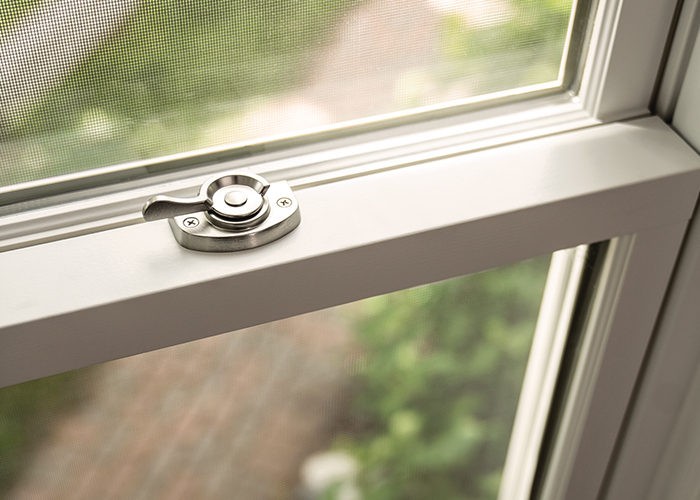
When going up against overly dirty windows, soapy water can only do so much. So for best results, we recommend using a quality window cleaner.
Avoid products that have a strong chemical base, since some of these can damage the actual components of your windows.
Choose Safe Equipment
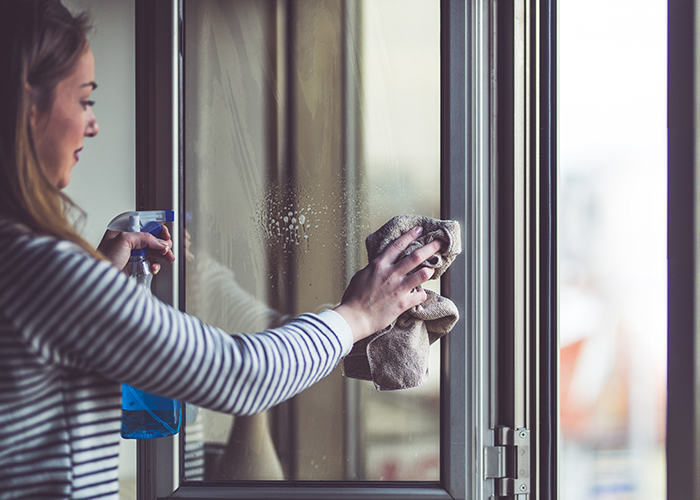
When cleaning your windows, it is important to avoid any brushes or rags that can cause damage to the window panes.
Do not allow metal parts of any cleaning equipment to touch the glass, and don’t use scrapers of any kind. Instead, search for lint free towels or microfiber cloths, as these are generally safe.
Start At The Top

When it comes to the motion of actual wiping, start cleaning windows at the top first, then continue to lower levels. A top-to-bottom pattern is the most effective way to ensure every area is hit evenly.
Dry The Window
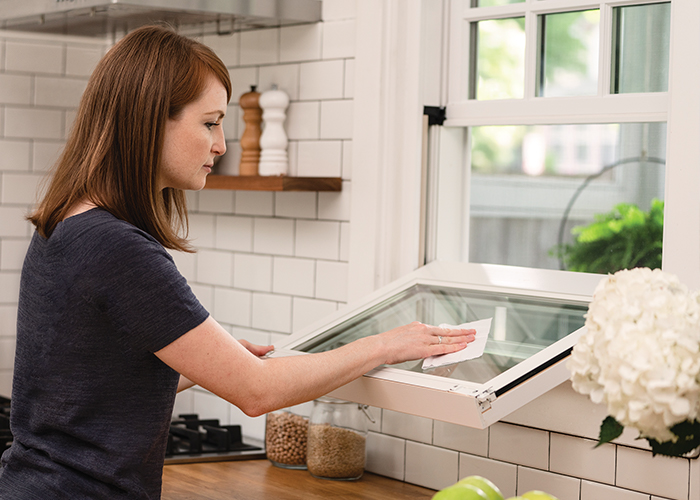
Once you are finished cleaning your windows, make sure to dry them!
Wipe any remaining traces of cleaning solution from the glass and other parts of the window frame. If left damp, windows — including their parts and frames — are susceptible to damage.
2. Cleaning The Frame
Over time, your windows are bound to collect dust, debris and other odd bits and pieces in their tracks.
If ignored, this dirt builds up and may affect their ability to open and close. So in order to keep your windows functioning properly for years to come, you are going to want to clean these every so often.
Keep reading to learn the hidden secrets of cleaning your window tracks:
Vacuum
The best way to begin the cleaning process is by vacuuming out as much of these scattered pieces as possible.
Try using a hand vacuum to suck up as much as possible. You won’t get everything, but it should definitely make a difference.
Initial Clean
Once the larger particles are out of your way, it’s time to dig up some dirt.
Use a spray bottle to apply your favorite multi-surface cleaner to the window track. Then, allow it to sit for a few minutes while it works the debris loose. After it’s done breaking down the dirt, use a cloth to wipe away the residue.
Secret Recipe
After you remove all of those easy to get to layers, it is time to get serious.
For deeper, more thorough cleaning, we recommend using an easy-to-make recipe that is particularly useful.
To make it, you’ll need:
- Baking soda
- White vinegar
- Dish soap
- Water
- An old toothbrush
- A spray bottle
First, spread some baking soda over the window tracks.
If possible, cover even the corners and grooves. Then fill a spray bottle with all the ingredients listed above: Use equal amounts of white vinegar and water; add a few drops of dish soap; and shake the whole cocktail up well.
Spray this mixture everywhere that’s been covered with baking soda then, finally, scrub the window frame with the toothbrush…Voilà! Watch as the filth gets wiped away from the edges.
Final Wipe
Finally, now that you have removed nearly all of the dirt and grime from the window track, use a rag to wipe it down once more.
Make sure you use a cloth that’s absorbent — otherwise you are simply dragging dirt around. However, if your options are limited, simple paper towels will do the trick.